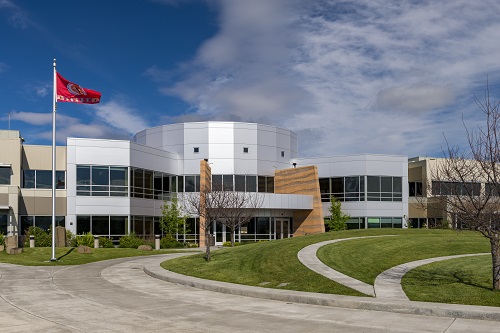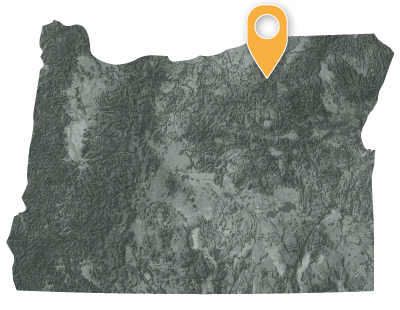 The Nix-yá-wii Governance Center at Whitehorse on the Umatilla Indian Reservation. (Oregon State Archives Photo)
The Nix-yá-wii Governance Center at Whitehorse on the Umatilla Indian Reservation. (Oregon State Archives Photo)
Contact
Address: 46411 Timíne Way, Pendleton 97801
Phone: 541-276-3165
About
Treaty Date: June 9, 1855; 12 Stat. 945
Number of Members: 3,203
Land Base Acreage: 172,000 acres
Number of people employed by the Tribes: 1,645
Economy
Agriculture, tourism, subsidiaries of Cayuse Holdings, Nixyaawii Community Financial Services, and Coyote Business Park, a 520-acre commercial and light industrial business development. Wildhorse Resort (casino, hotel, RV Park, golf course), Arrowhead Travel Plaza, the Mission Market; and the Indian Lake campground. The tribes are typically one of the top employers in the region.
Points of Interest
Tamástslikt Cultural Institute, Nixyáwii Warriors Memorial, Crow’s Shadow Institute of the Arts, Oregon National Historic Trail, Lewis & Clark National Historic Trail, seasonal upland game bird and turkey hunting
History and Culture

Three tribes comprise the Confederated Tribes of the Umatilla Indian Reservation (CTUIR): Cayuse, Umatilla, and Walla Walla. They have lived on the Columbia River Plateau for more than 10,000 years, in an area of what is now northeastern Oregon and southeastern Washington. In 1855, the tribes and the United States government concluded a treaty in which the tribes ceded approximately 6.4 million acres and reserved 510,000 acres for their exclusive use in the form of a reservation. Various congressional acts of diminishment resulted in a significantly reduced reservation. In the treaty, the CTUIR reserved their inherent fishing and hunting rights and the right to gather traditional foods and medicines within the ceded areas.
The traditional way of life of the tribes is called “Washat” or “Seven Drums prayer service.” The Umatilla, Walla Walla, and Nez Perce languages are spoken and a language preservation program is helping to re-establish use of these languages by youth.
Tribal Court
Chief Judge William Johnson, 46411 Timíne Way, Pendleton 97801; 541-276-2046
Tribal Governance
Chairman Gary I. Burke, Vice Chairman Aaron Ashley, Treasurer Raymond Huesties, Secretary Roberta Wilson, Members at Large Toby Patrick, Lisa Ganuelas, Corinne Sams and Steven Hart; General Council Chairman Alan Crawford.